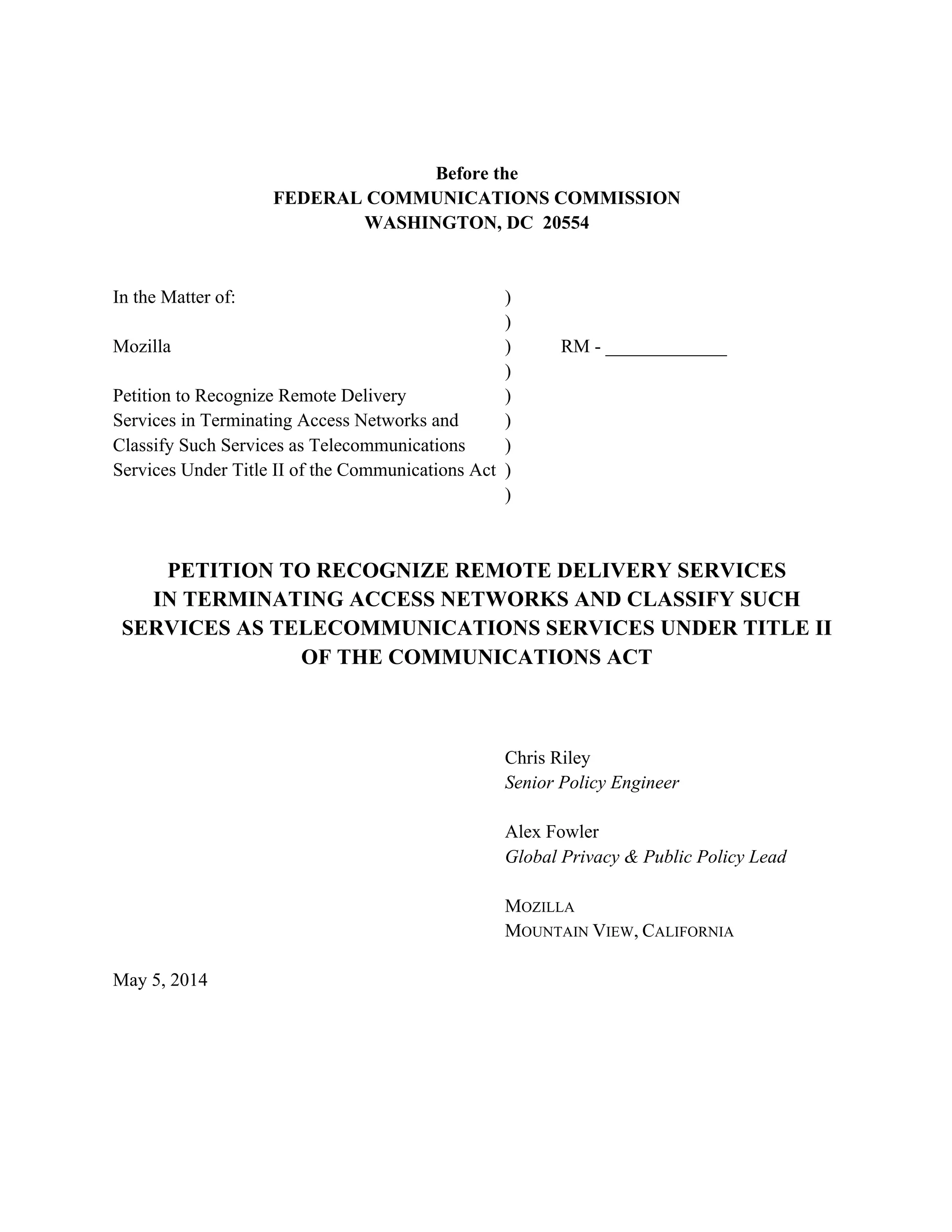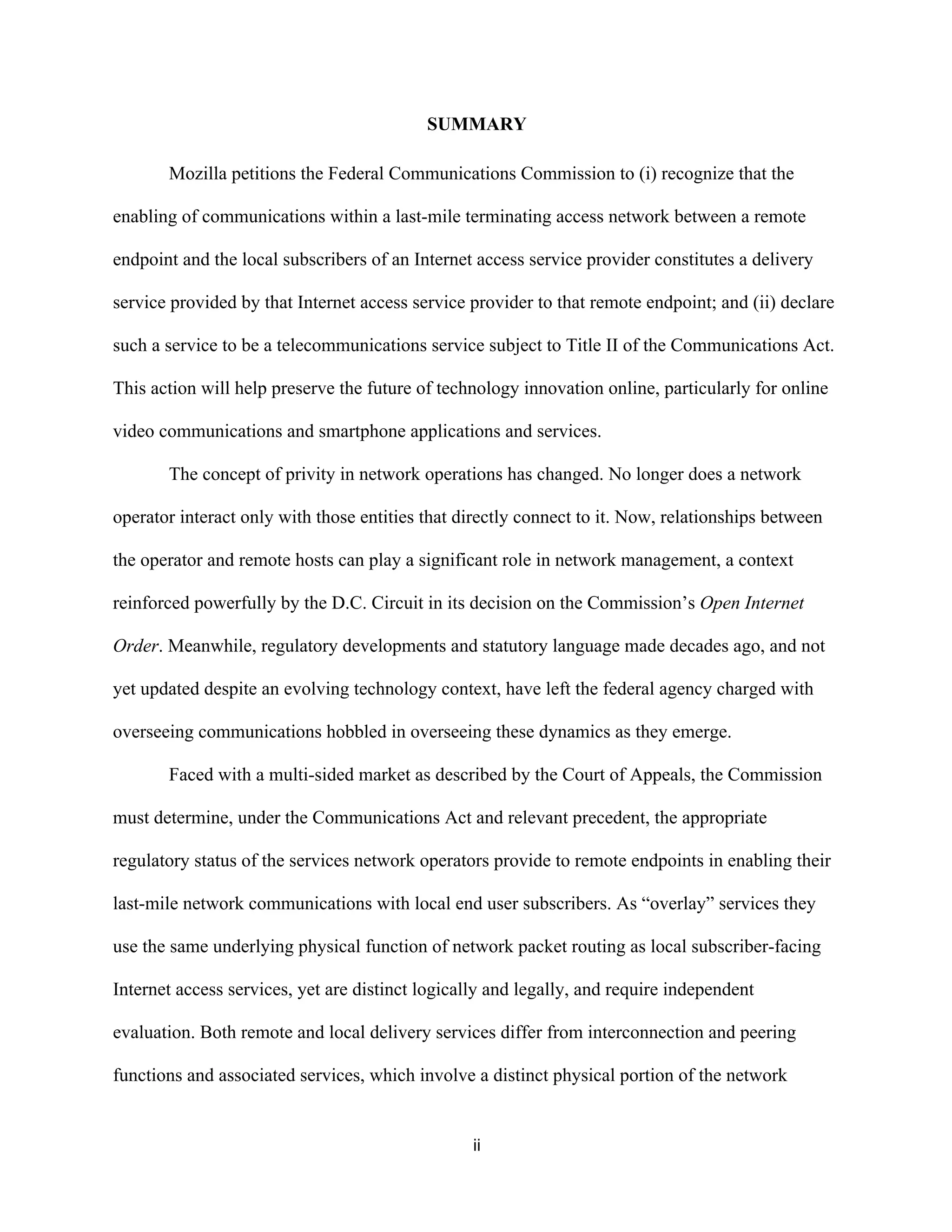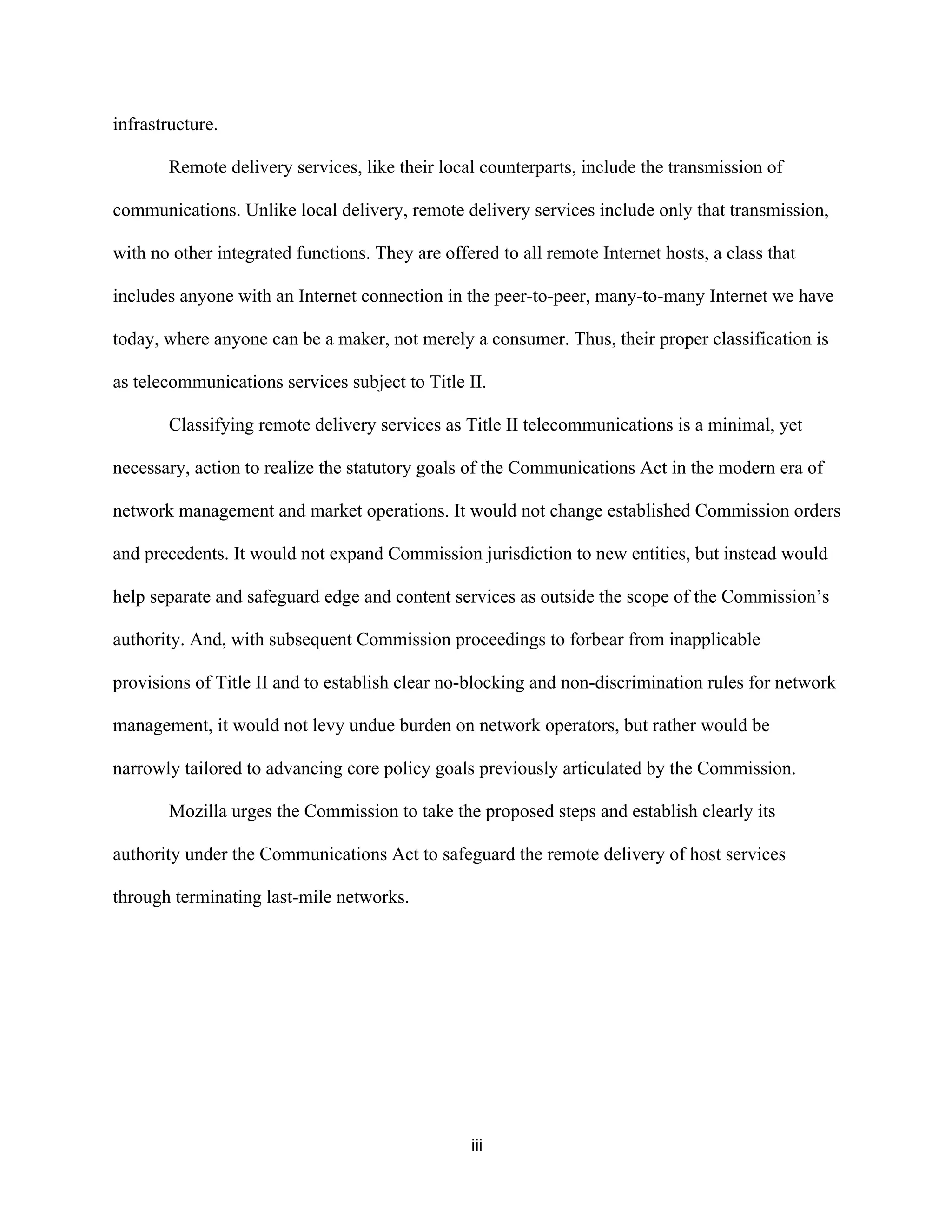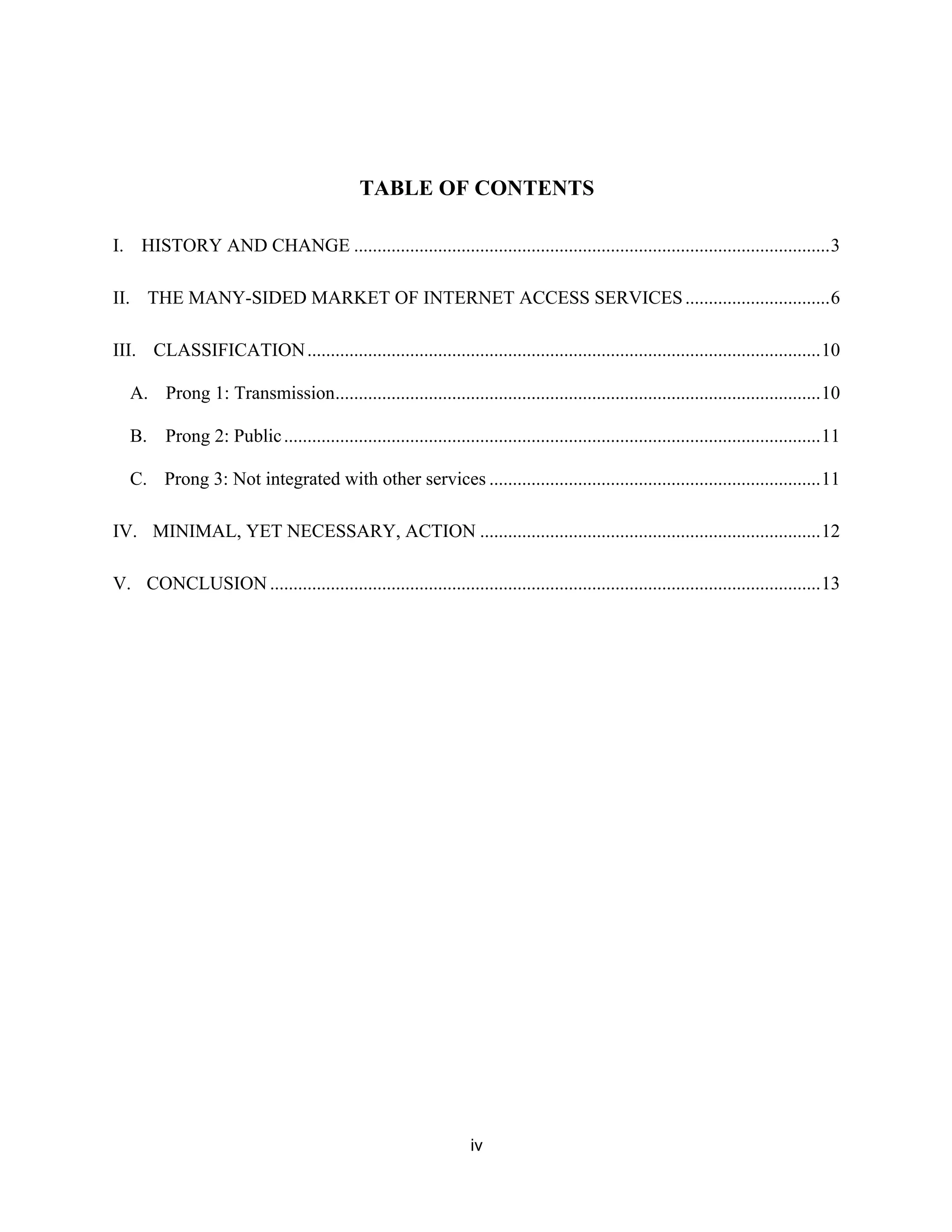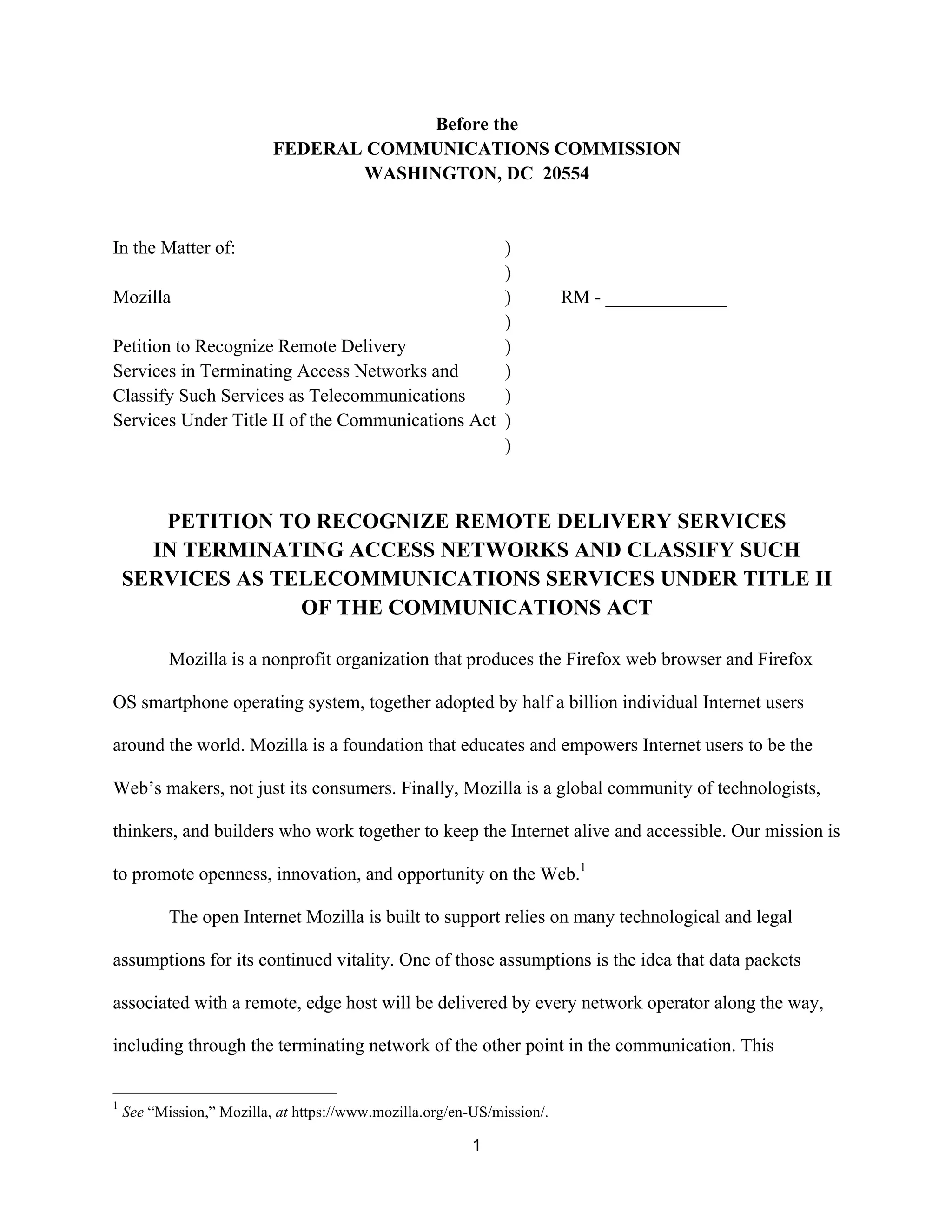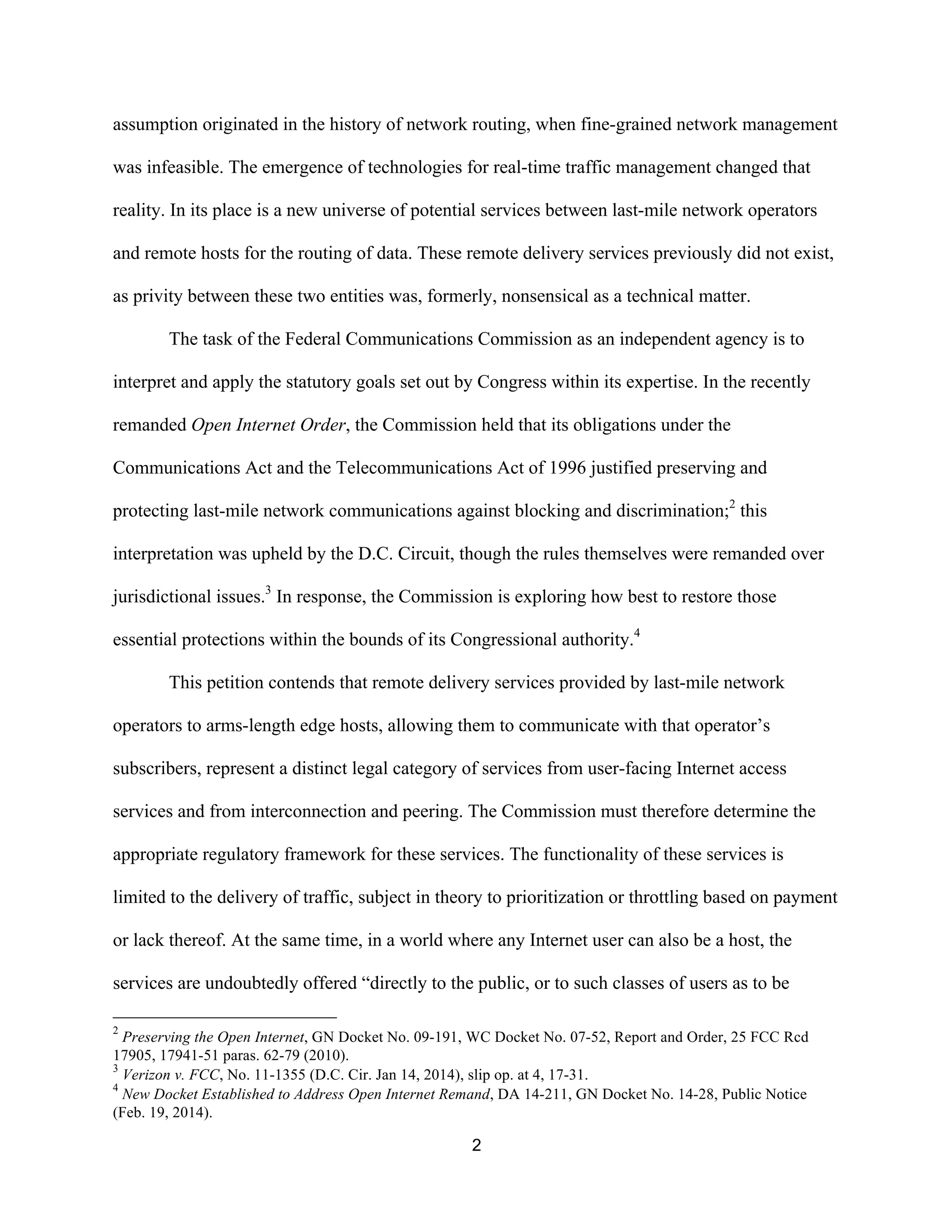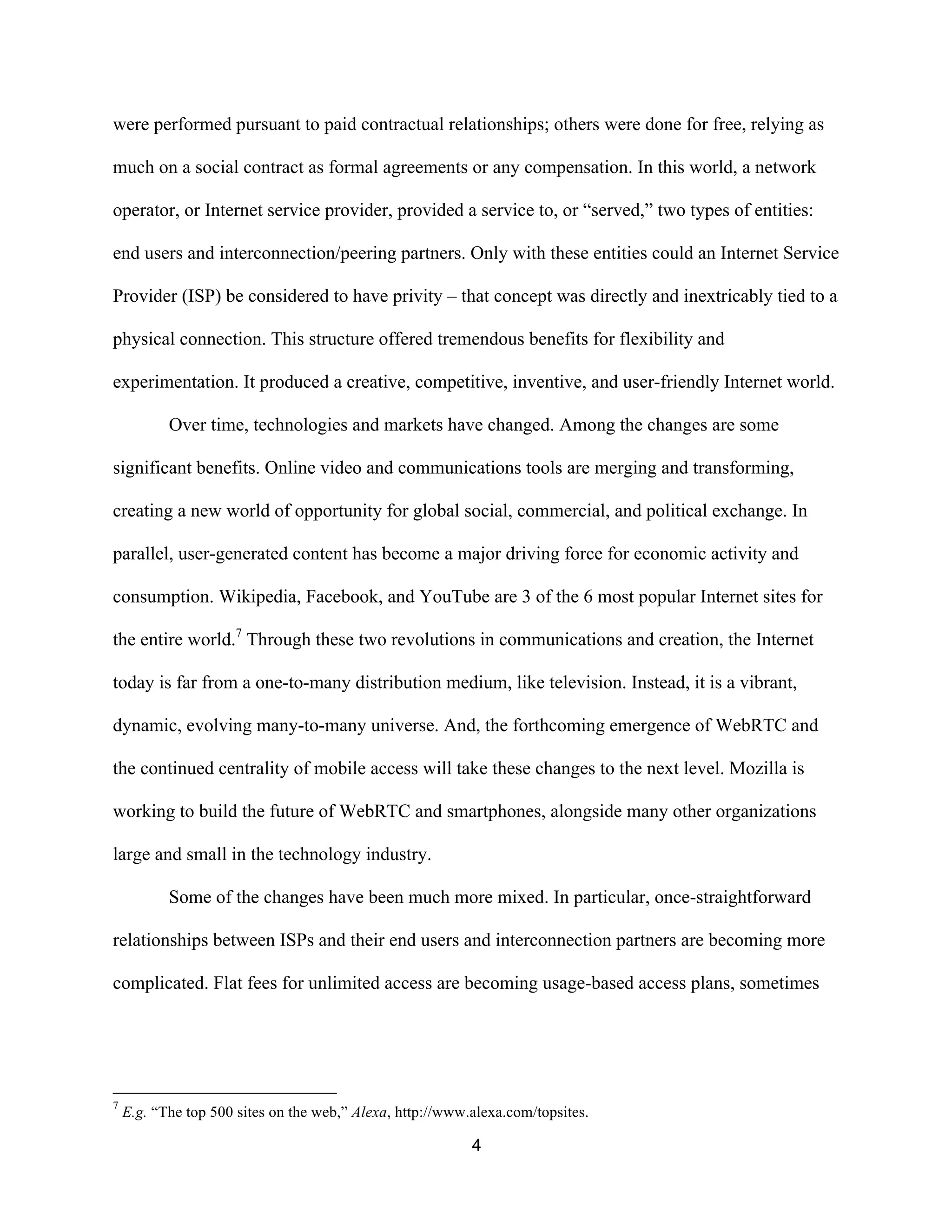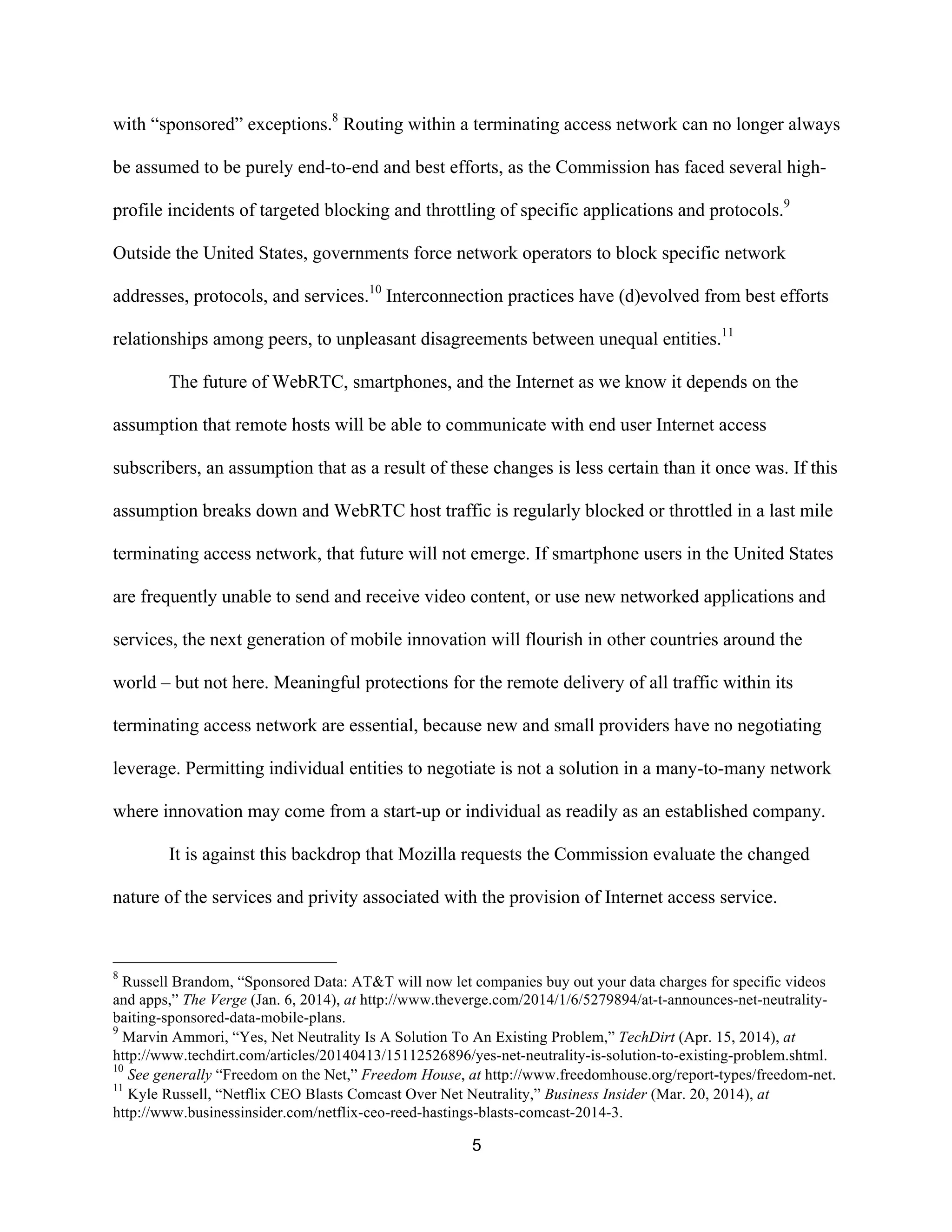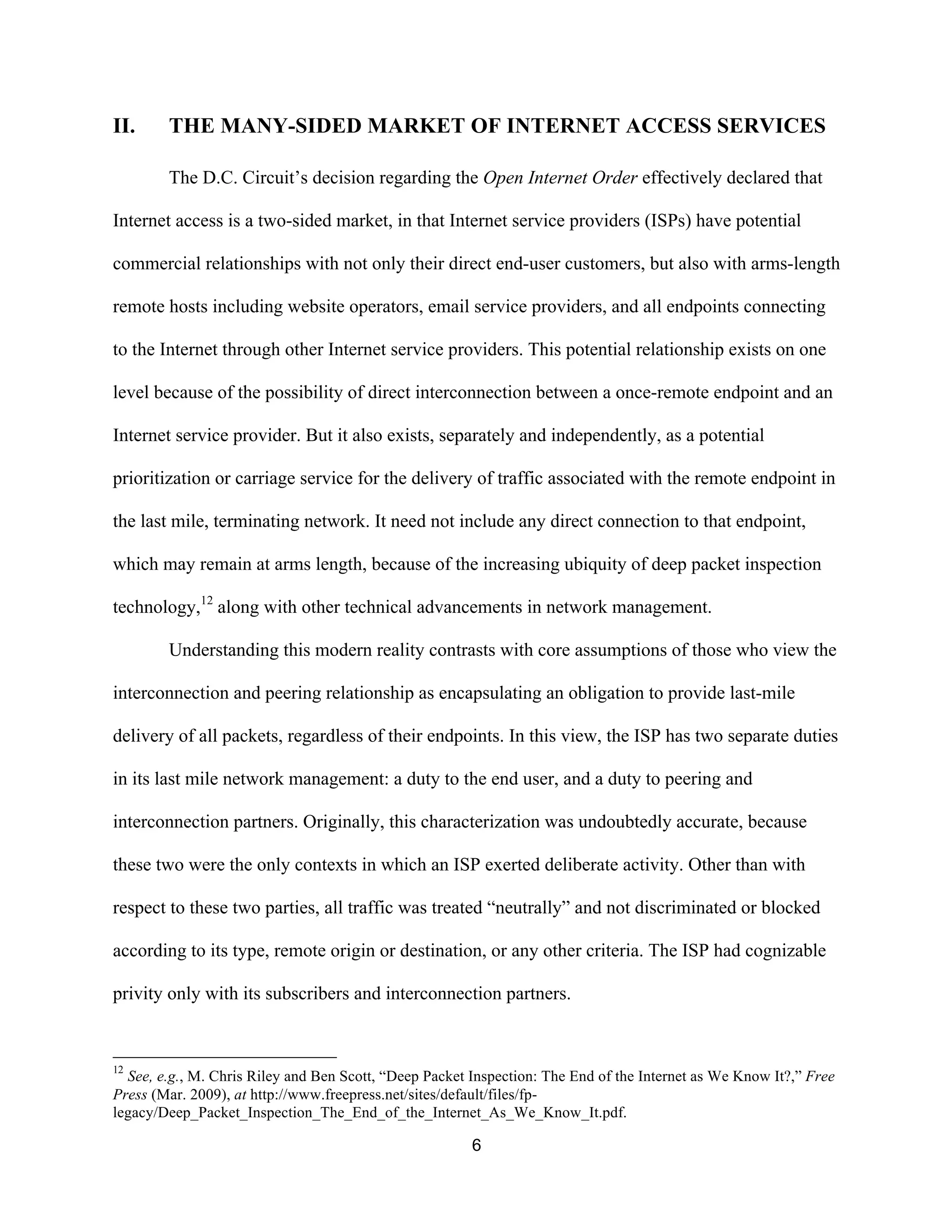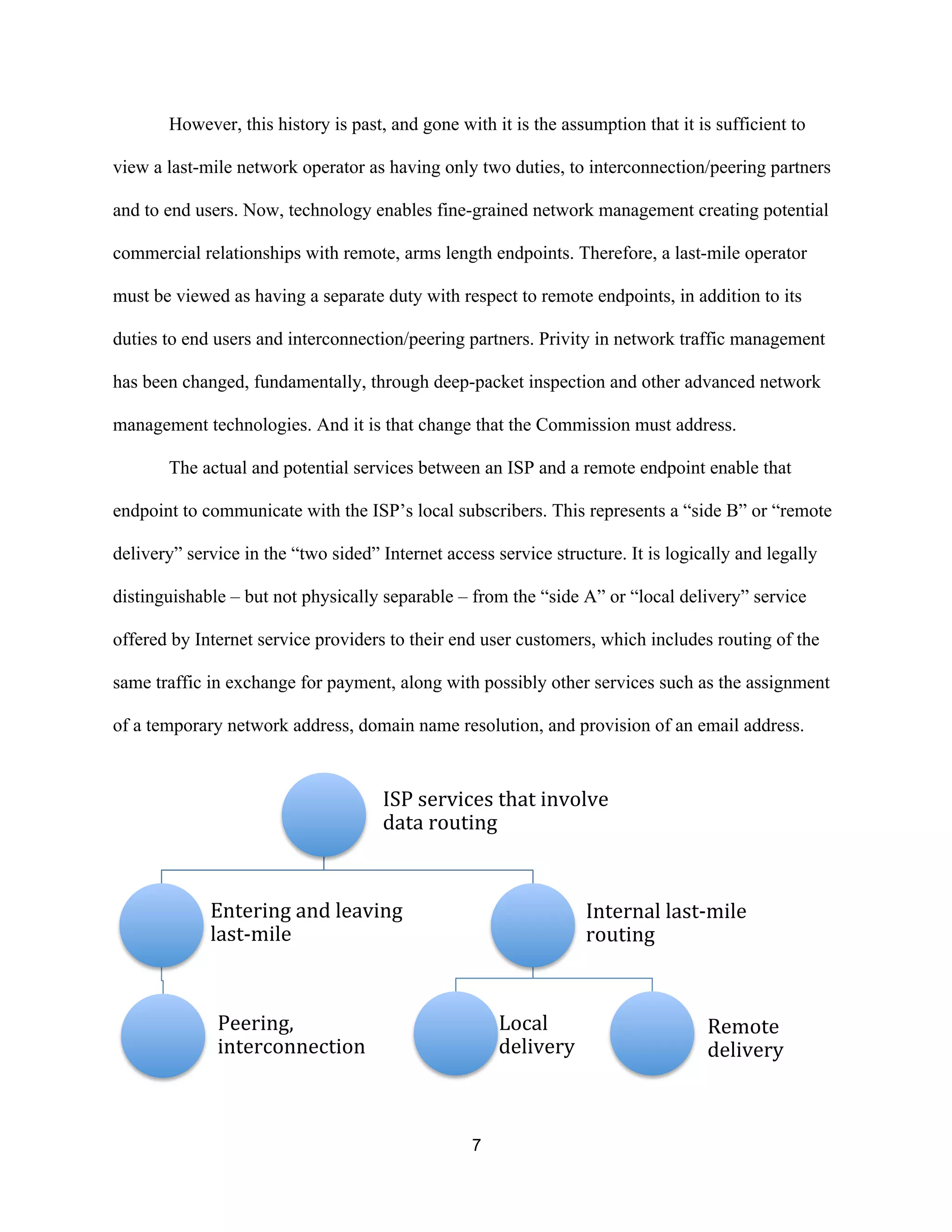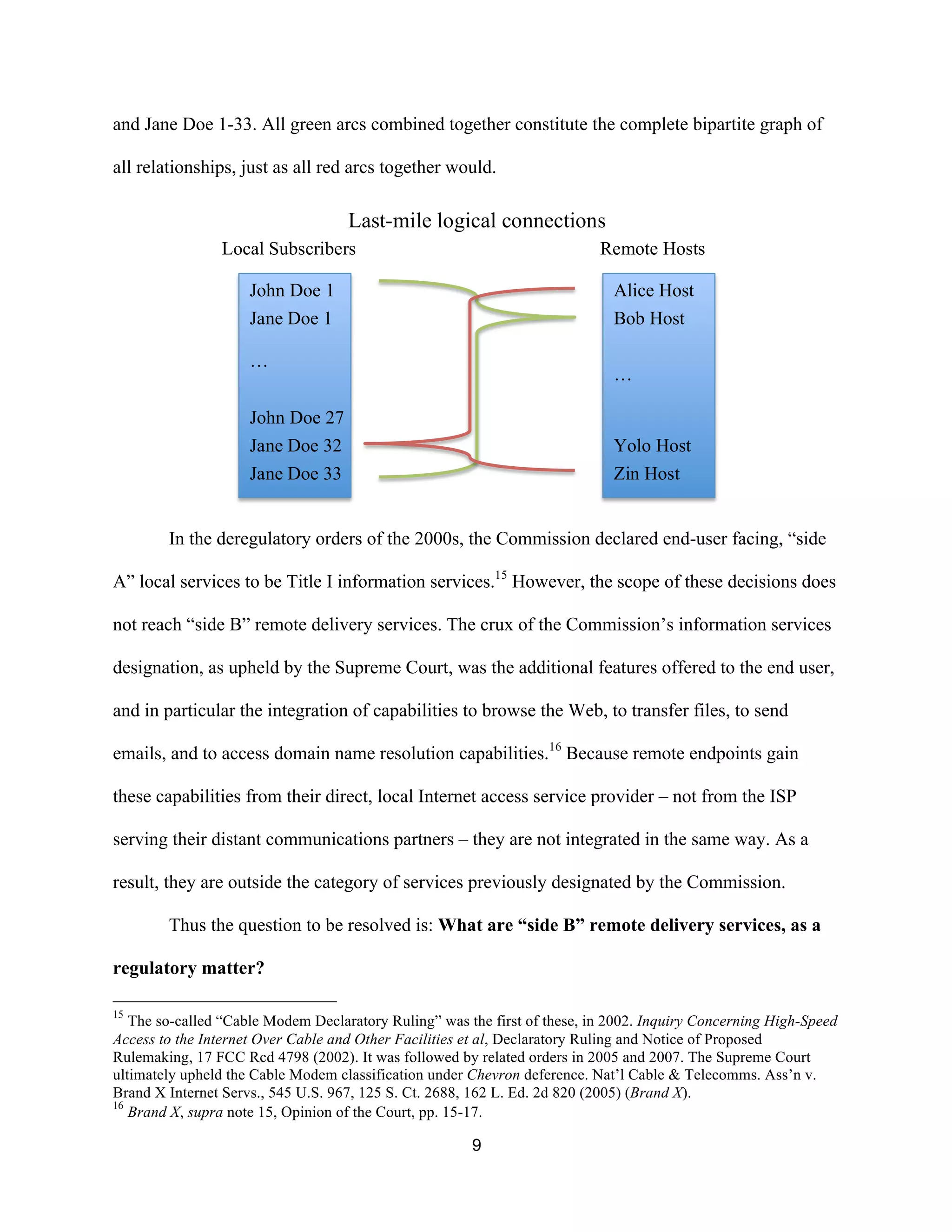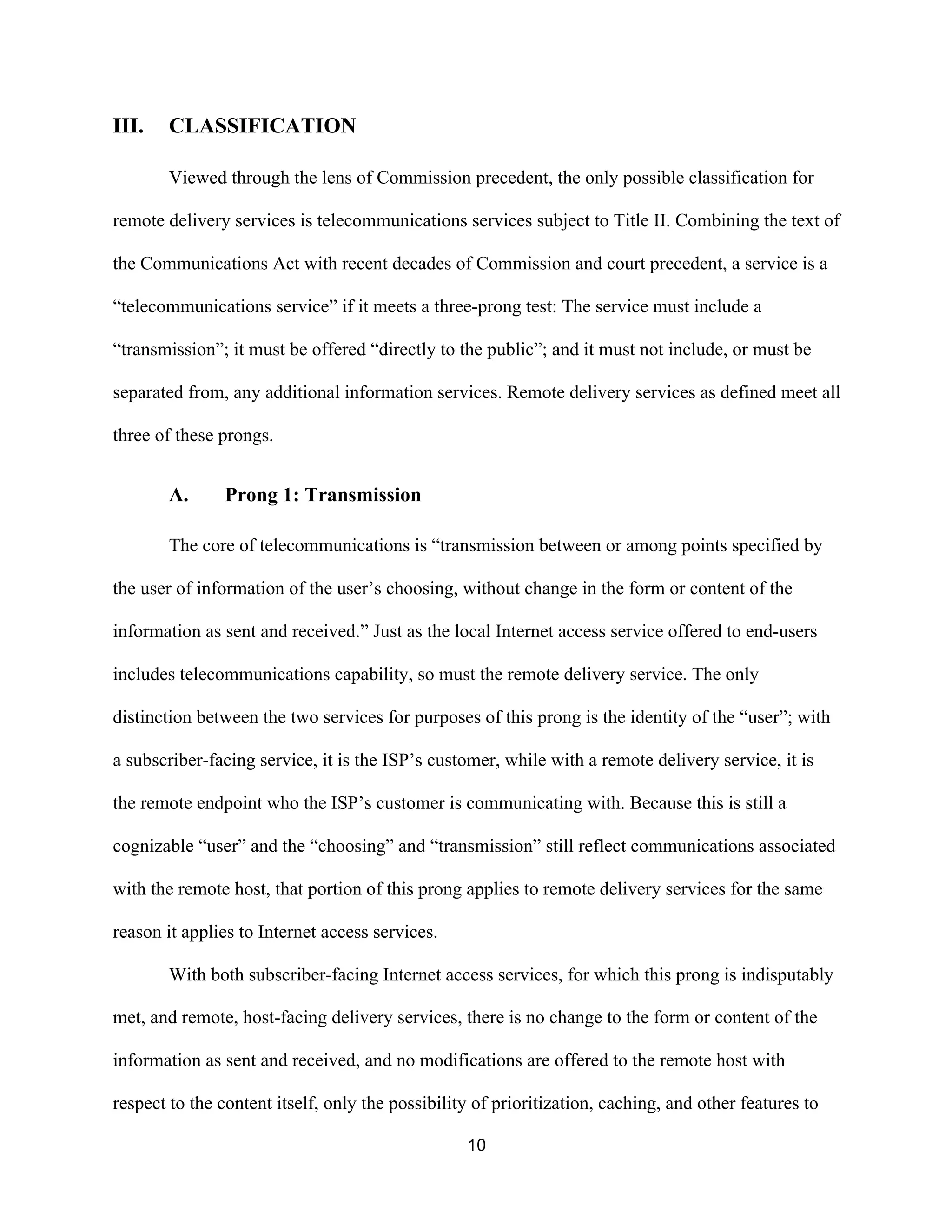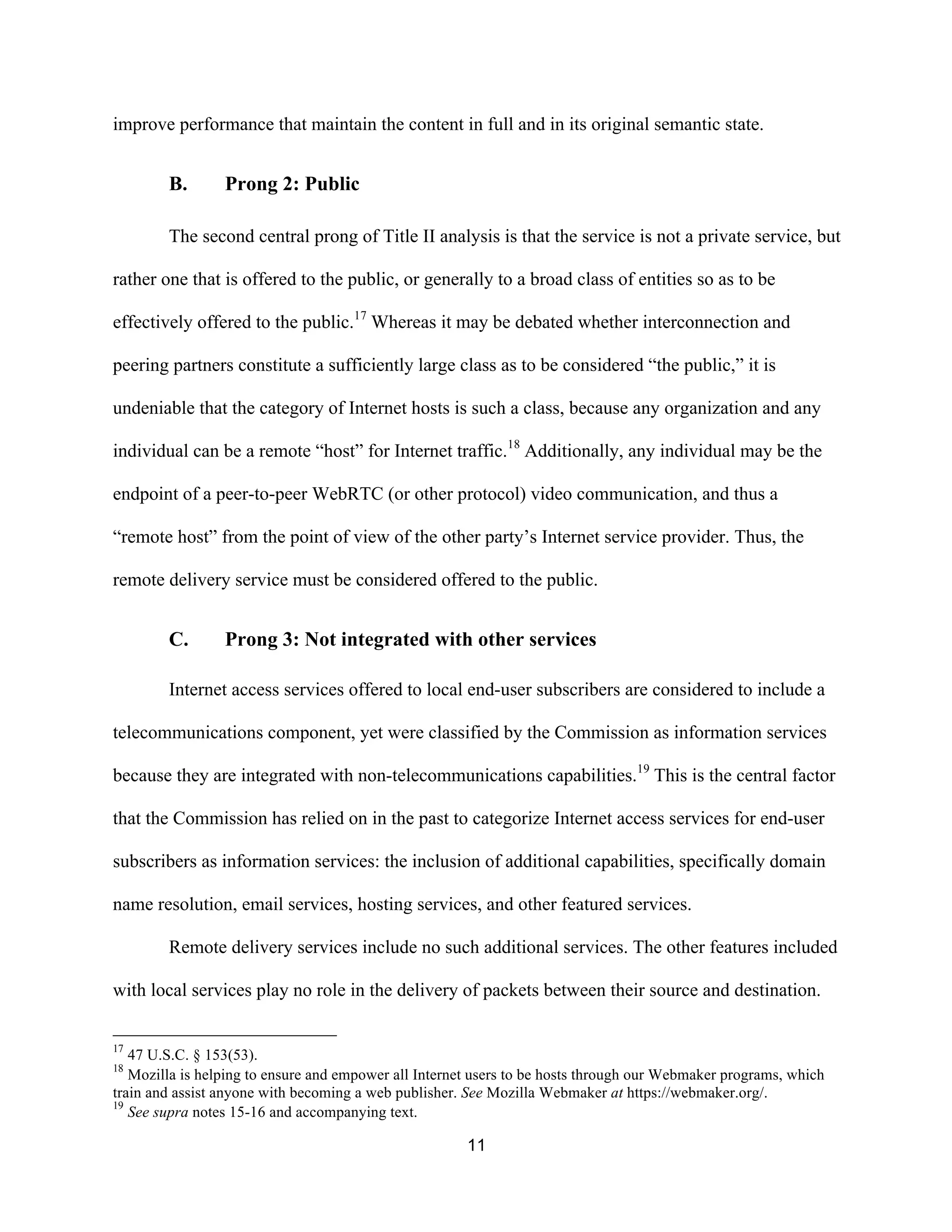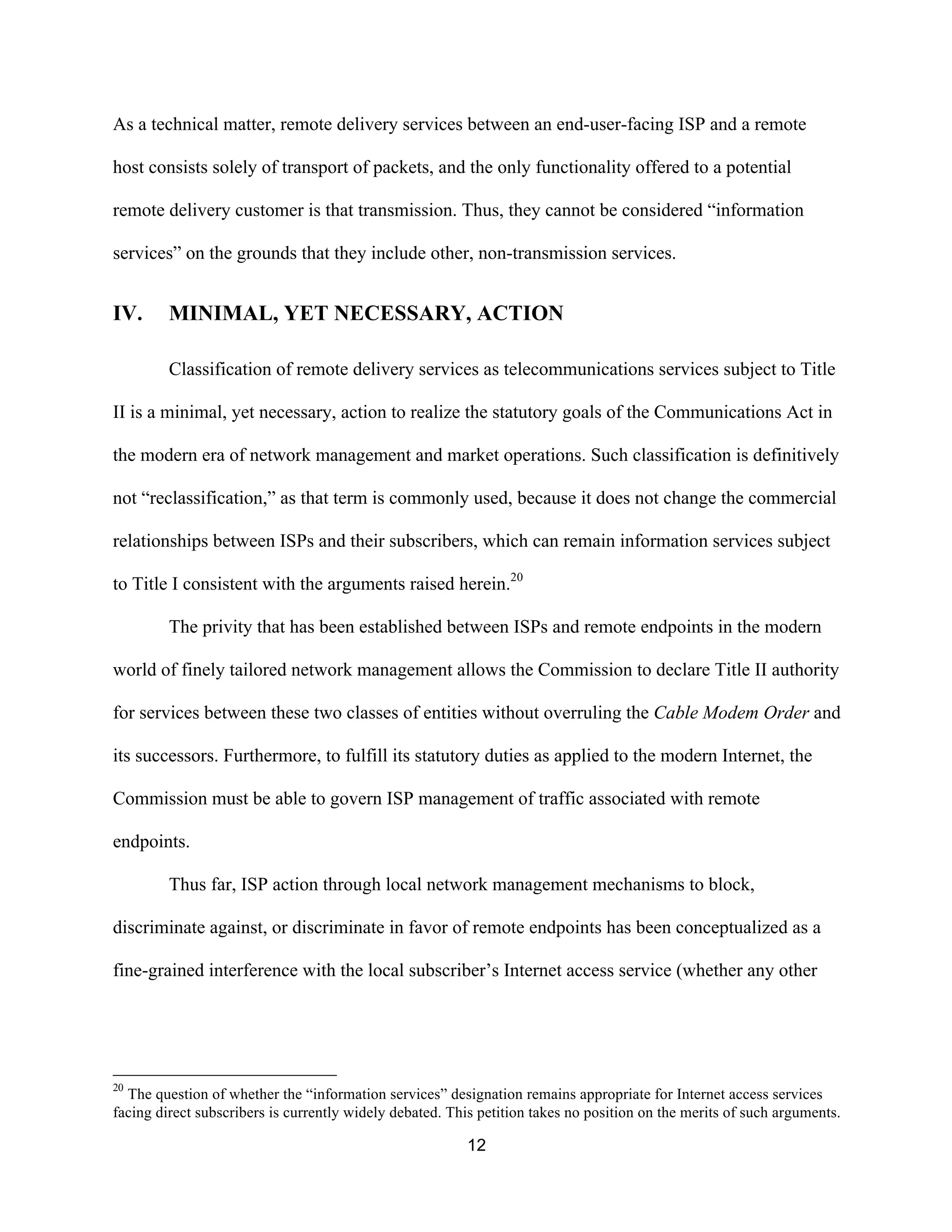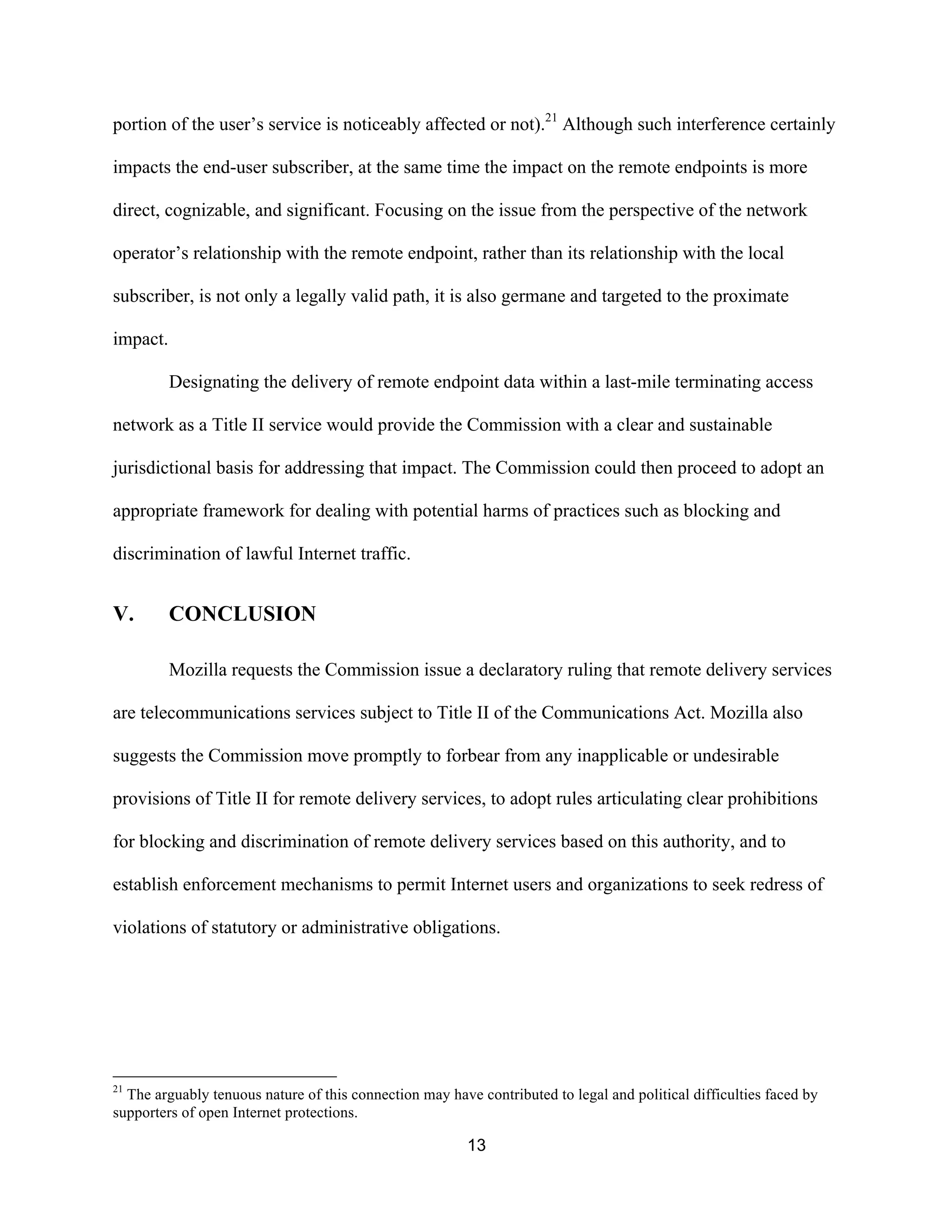Mozilla petitions the FCC to (i) recognize that enabling communications between a remote endpoint and local subscribers of an internet access provider constitutes a delivery service provided to the remote endpoint, and (ii) declare such a service a telecommunications service subject to Title II. This action would help preserve innovation for online video communications and apps by clarifying the FCC's authority over traffic management practices that can block or throttle remote endpoints. The petition argues that remote delivery services provided by last-mile networks to enable communications with edge hosts, like websites and email services, should be classified as telecommunications services given their limited function of transmission.
